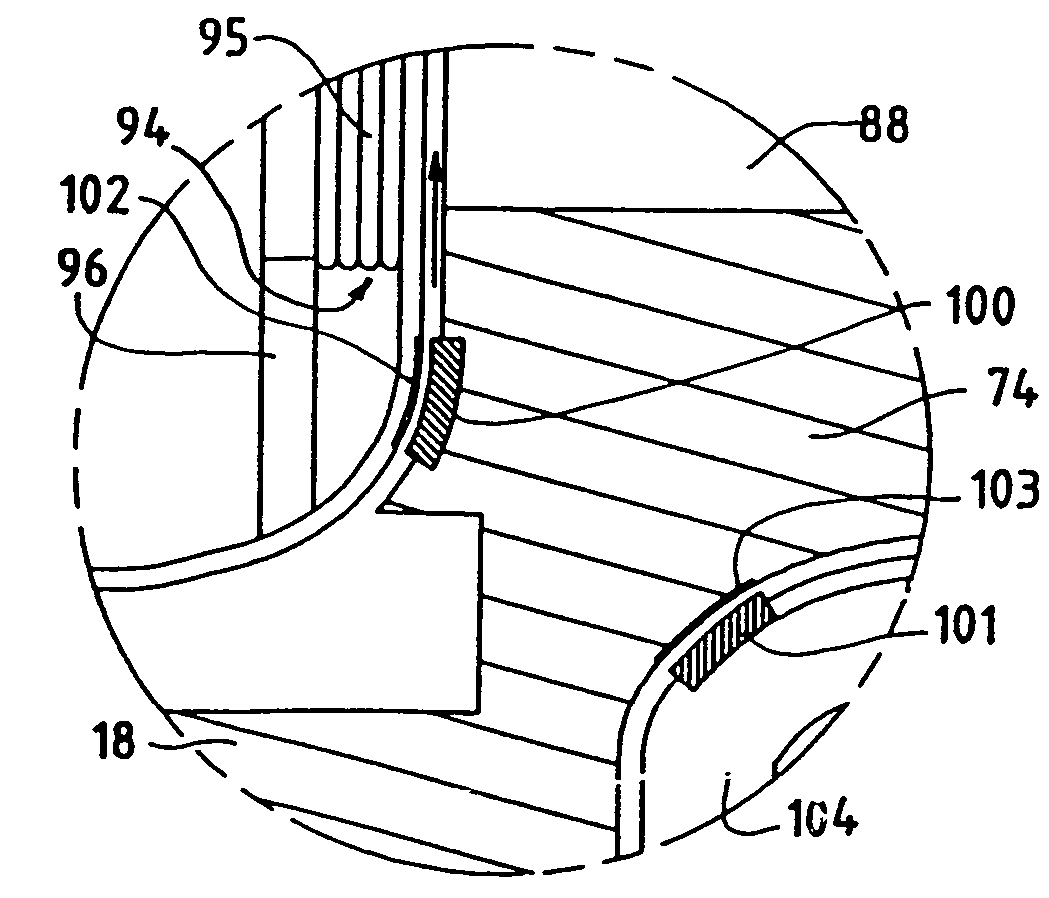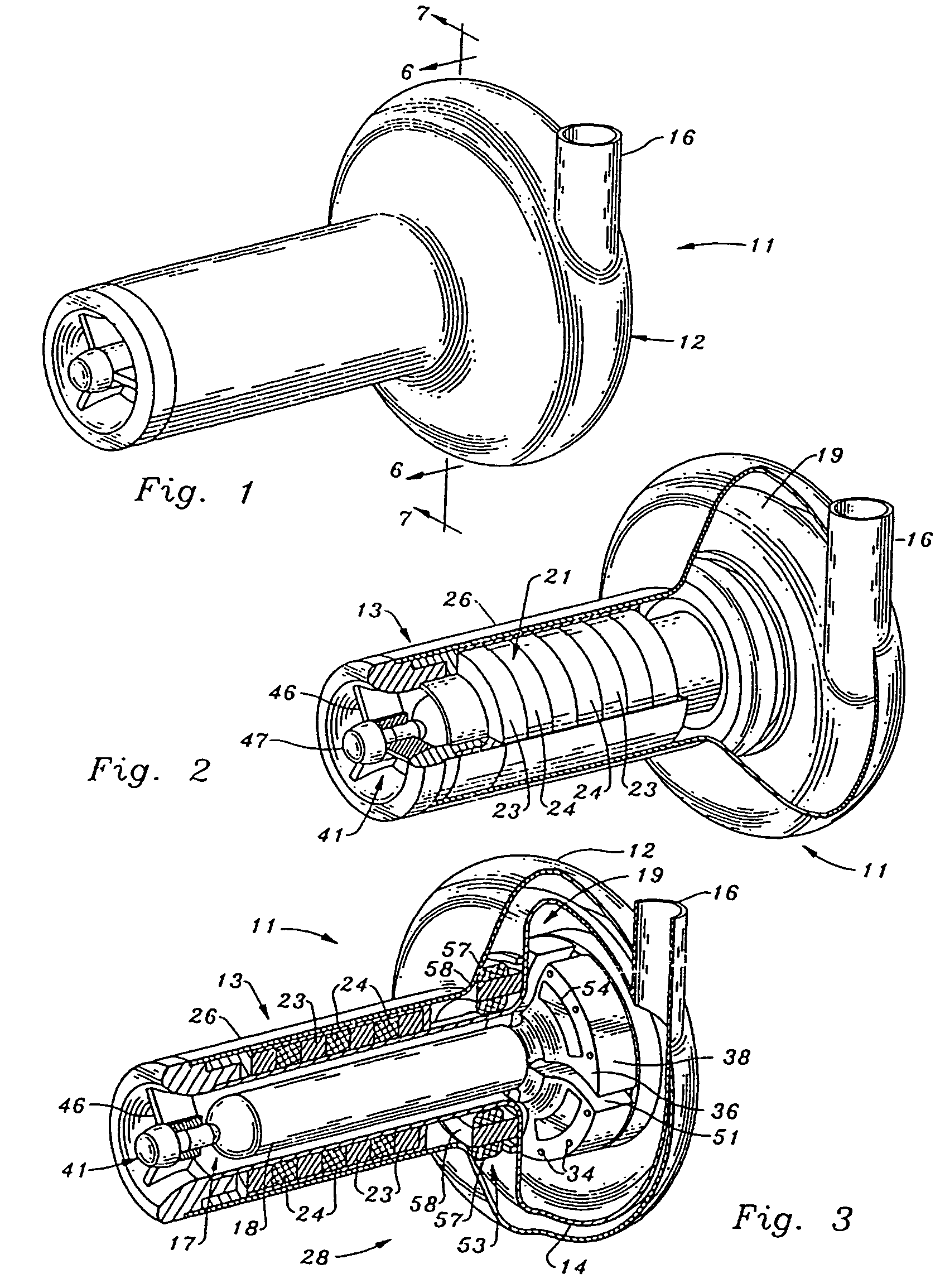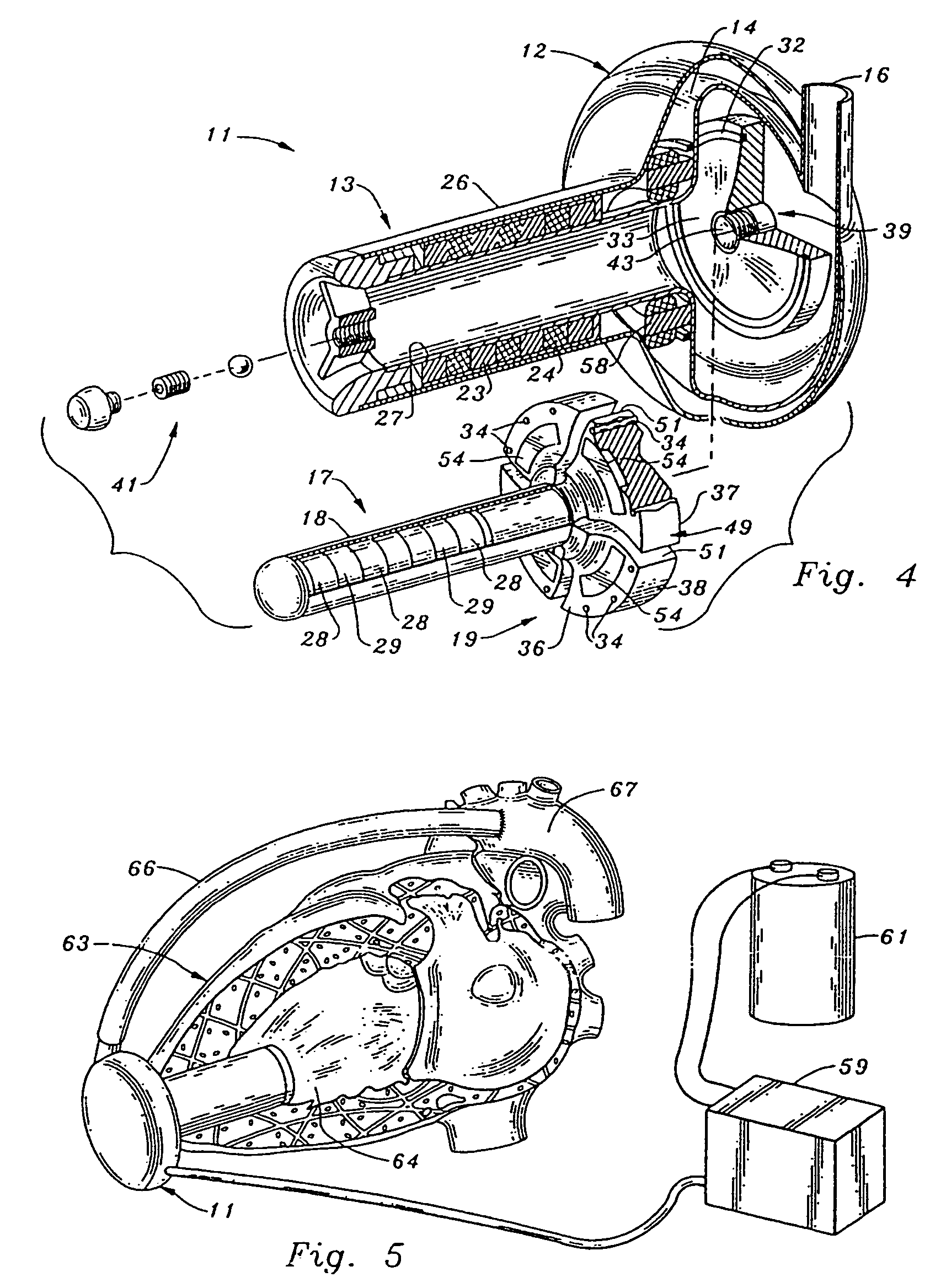Sealless rotary blood pump
a rotary, blood pump technology, applied in the field of blood pumps, can solve the problems of frequent hospitalization, severe physical disability, and variety of anatomical and engineering problems, and achieve the effects of shortening the residence time, efficient pump operation, and minimizing the likelihood of blood thrombosis
- Summary
- Abstract
- Description
- Claims
- Application Information
AI Technical Summary
Benefits of technology
Problems solved by technology
Method used
Image
Examples
Embodiment Construction
[0050]Turning now to FIGS. 1-8 of the drawings, a sealless rotary blood pump 11 includes a housing 12, having an elongated inlet tube 13 and an impeller casing volute 14. A discharge tube 16 extends through the housing to communicate with the interior periphery of casing 14. Tube 16 has a tangential orientation with respect to a radius of the casing, for effectively channeling the blood output from the pump.
[0051]A pump rotor 17 is located within housing 12, within casing 14, and includes an elongated, right-circular cylindrical support shaft or spindle 18, attached to a disc-shaped impeller 19. Rotor 17 is mounted for rotation about a longitudinal axis which extends both through shaft 18 and impeller 19. It should be noted that the preferred embodiment disclosed herein includes an impeller and a casing of centrifugal design. However, many of the structural features and aspects of operation of the present invention may also be adapted advantageously to rotary blood pumps of axial fl...
PUM
 Login to View More
Login to View More Abstract
Description
Claims
Application Information
 Login to View More
Login to View More - R&D
- Intellectual Property
- Life Sciences
- Materials
- Tech Scout
- Unparalleled Data Quality
- Higher Quality Content
- 60% Fewer Hallucinations
Browse by: Latest US Patents, China's latest patents, Technical Efficacy Thesaurus, Application Domain, Technology Topic, Popular Technical Reports.
© 2025 PatSnap. All rights reserved.Legal|Privacy policy|Modern Slavery Act Transparency Statement|Sitemap|About US| Contact US: help@patsnap.com



